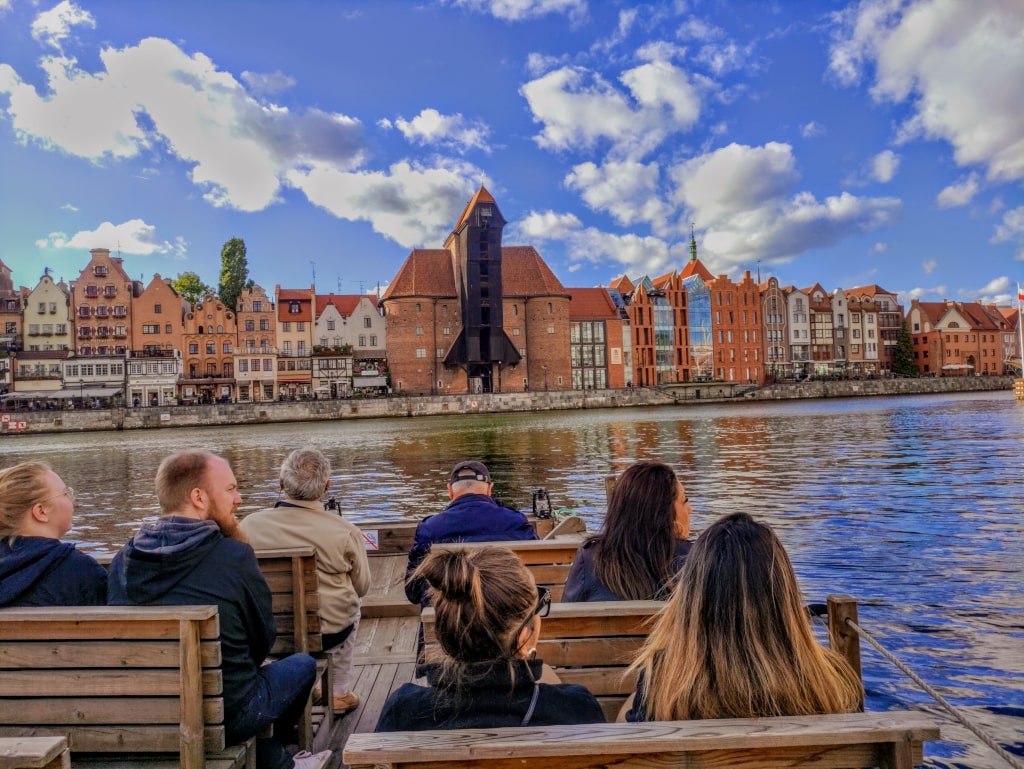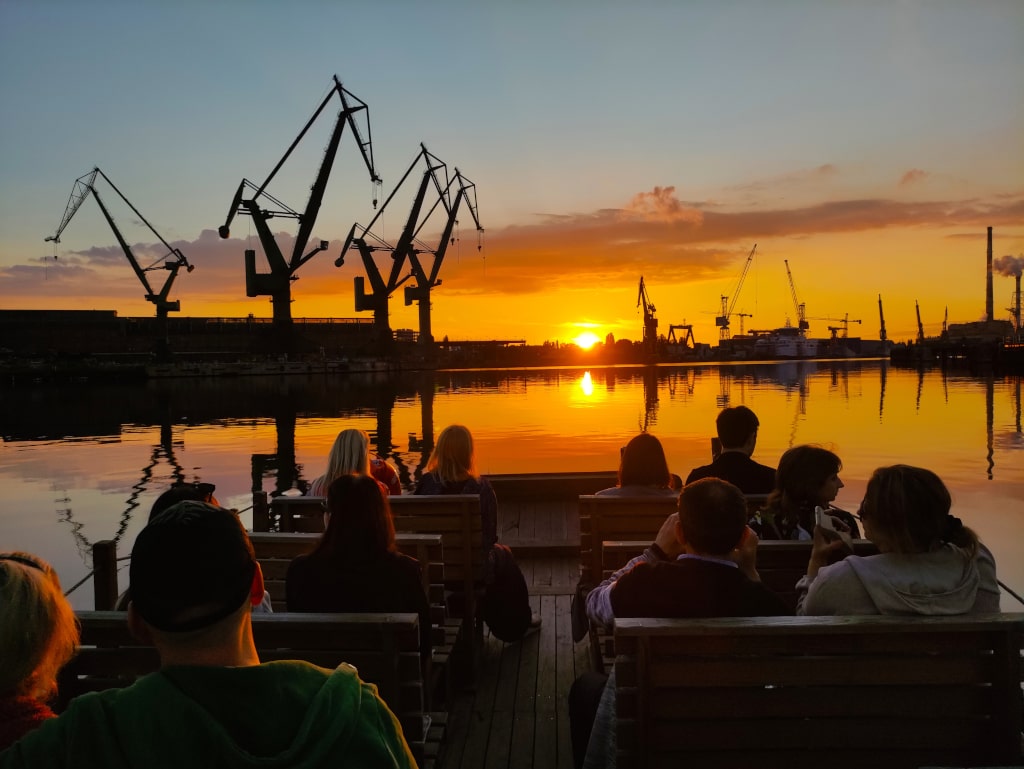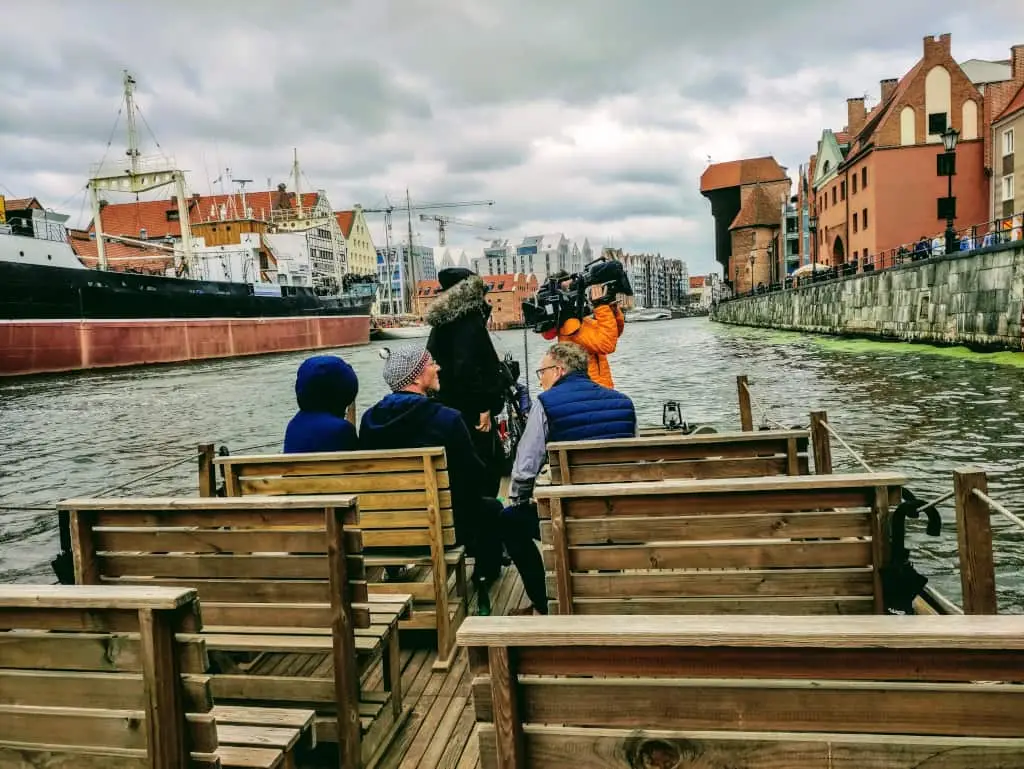
Gdansk - City of River
The first mentions of Gdansk after thedate back to 997, when St. Adalbert arrived here, traveling on a mission to Prussia. In the year 1000 The Life of Saint Adalbert records the name “urbs Gyddanyzc“. The word ” urbs” means city, and the Latin way of zaspelling of the name Danzig indicates that it had a Slovenian sound at the time.Slavic, as evidenced by the characteristic ending –sk (written as –zc). However, when looking for the meaning of the name Danzig, one must go back to the Prussian root word, i.e. the speech used by the Balts people living on the other side of the Vistula River. In this language, words with a similar-sounding root mean ły ‘wetland’, ‘marshland’. So everything seems to agree Gdansk is indeed located in a wetland, which must have resembled a quagmire before numerous land reclamation measures were applied. However, there is also another explanation for the name Danzig, actually not so much different as less direct. This is because most likely the Prussian word with the root ‘ gd‘ (unknown today) was the earlier name of the Motlawa River. And it was only from the river ki passed to a settlement located on its banks.
In the name Danzig, therefore, one can see both a city and a river. This has its deep justification, not only in the root of the name, but also in the po tying almost the entire history of the city to the river. The development of the city, the prosperity, work and life of many generations of people, but also natural disasters and reconstruction from destruction and cataclysms are the common heritage of the two elements of nature, represented by the river, and culture, brought and developed here by people. Gdansk flourished thanks to its convenient location on the river right at the mouth of the Baltic Sea and the skills of the people who came here, who were able to use the natural conditions for economic purposes.

Throughout the more than 1,000 years of Gdansk’s history, everything about it has been subject to constant change. Starting from the landforms, transformed from wetlands to a place where brick townhouses, harbor cranes and magnificent temples stood, and ending with the nationality, which changed a dozen times: the Kingdom of Poland, the Duchy of Pomerania, the Duchy of Cracow, the Teutonic Order stateKingdom of Poland, the Polish-Lithuanian Commonwealth, the Kingdom of Prussia, the Free City of Danzig (under the guardianship of the French Empire), the Kingdom of Prussia again.Kingdom of Prussia again, the German Empire, the German Reich (known as the Weimar Republic), the Free City of Danzig again (this time under the guardianship of the League of Nations), the Third Reich, the Polish People’s Republic and the Republic of Poland!
How important this place must have been on the map, since it was so often a source of disputes. Battles were fought over Danzig by the Pomeranians with the Piasts, the Piasts with the Brandenburgers, the Brandenburgers with the Teutonic Knights, the Teutonic Knights with the Danzigers and the Kingdom of Poland, the Danzigers and the King of Poland. Polish state with the Swedes, Danzigers as supporters of StanislawLeszczynski with Russia, which was opposed to him, Danzigers with Prussia, Prussia with France, Poland with Nazi Germany and hitleGermany with the Soviet Union.
But on the other hand, what an excellent and attractive place it must have been, if representatives of so many nationalities lived here and built the city’s splendor. In the early Middle Ages it was dominated by the people of the local population. At the end of the Middle Ages, an influx of people was recorded. Germany’s wall, but it is important to know that this does not mean a homogeneous group ofpy. For the “Germans” consisted of newcomers coming from, among other places: Lower Saxony, Westphalia, the Rhineland, the Netherlands (i.e. Lower Germany), Pomerania, Mecklenburg, Holstein, Schleswig (i.e. from the coast of the of the Baltic Sea), Thuringia, Hesse, Nassau (i.e. Upper Germany), and from Silesia, Bohemia, Moravia and Brandenburg. Danes, Swedes, English and many other nations also lived in Danzig.

Gdansk has experienced both dramatic and sublime periods. Among the most grim is the slaughter of Danzig in 1308, when the Crusader The sorcerers slaughtered the Polish knights and the castle’s crew, drove out the inhabitants of theczan, and burned down the city. Or the period of World War II, which led to the destruction of 90% of the historic buildings, the gehenna of the population and an almost complete change in the demography of the city. Sublime periods include two centuries (the 16th and 17th) of prosperity and relative peace, when Gdansk became the richest city in the Republic. Or the upsurge Solidarity in 1980, which ultimately led to the fall of communism in Poland.
The Motlawa River, whose original name carried the nucleus of the name Danzig, witnessed all these events. From the beginning it was at the center of economic life. Clad with granaries, shipyards nities, workshops, gates and tenements, tied together by numerous bridges, repeatedly dug up and rammed in different directions, was the center of all the traffic that took place in Gdansk. And traffic is life. That’s how it used to be and that’s how it is today when crowds of visitors come to the city, whether during the St. Dominic’s Fair or at any other time, and make their way to the Motlawa River, where the heart of Gdansk beats.
- Materiały pochodzą z przewodnika "Galarem Po Gdańsku"
- Fot.: fotopolska.eu
- City of Gdansk
- By Galar in Gdańsk, City of Gdansk, Fish Market, Granary Island, Long Embankment, Motlawa, Olowianka Island, Water Gates
Buy tickets
Available forms of payment:

Select the number of tickets and then the date.
See other cruises

Galar cruise in Gdansk
Unforgettable, atmospheric cruises on the Motlawa River aboard a 12-person replica of a vintage Polish Galar boat.

Sunset Cruise
Take an enchanting cruise around Gdansk during a dazzling sunset and discover a whole new face of sightseeing.

Private cruise
Rent an intimate, 12-person replica of a historic Polish Galar boat and take your friends, on a unique cruise along the route of your choice.
